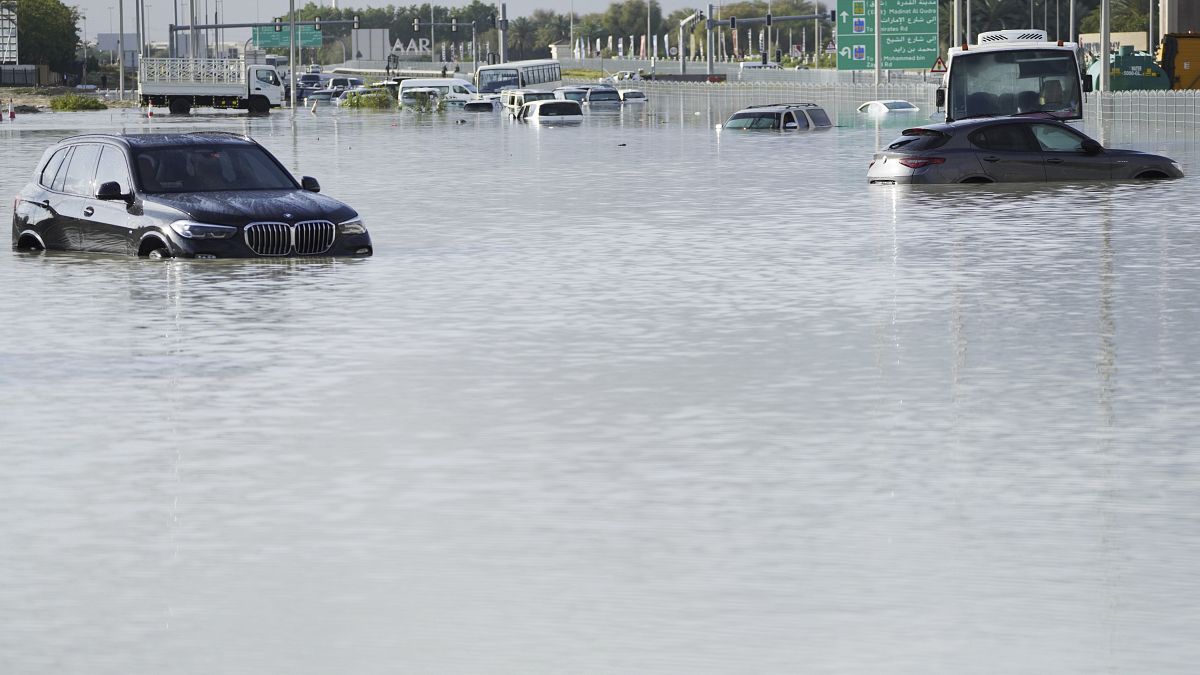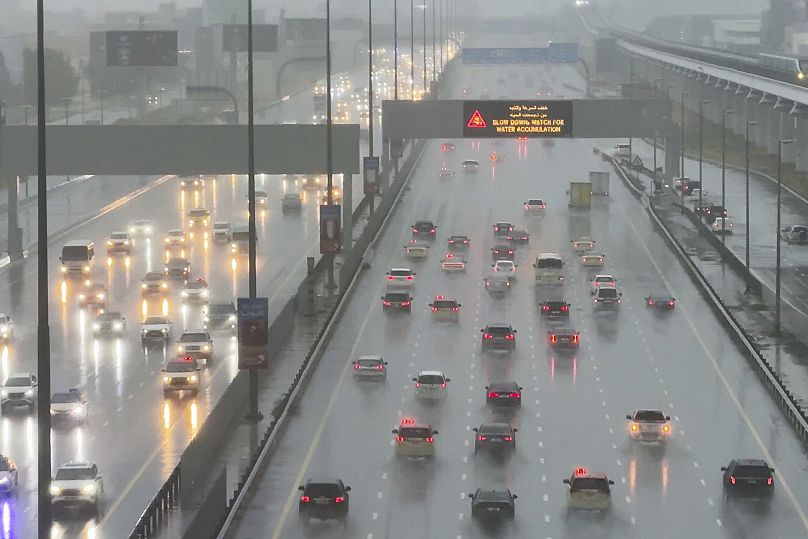Authorities deployed tankers to pump away the water, but the lack of regular rainfall means many roads lack proper drainage.
The United Arab Emirates has been inundated with heavy rain, with major highways flooded and flights disrupted at Dubai International airport.
Local media described the precipitation as a “historic weather event”, saying the amount of rain recorded surpassed anything documented since data collection started in 1949.
Rain is unusual in the UAE but does occur periodically during the cooler winter months. Many roads and other areas lack drainage given the lack of regular rainfall.
In the latest storm, Dubai reported 142mm of rain in a single day – the same amount the city typically expects in 18 months.
Schools across the country were closed ahead of the storm and government employees were encouraged to work from home.
Authorities sent tankers into the streets to try to pump away the water. But it had already poured into some homes, forcing people to bail out their houses themselves.
The storm system that moved through the Arabian Peninsula may have been exacerbated by cloud seeding flights, a strategy intended to address water challenges.
Cloud seeding is a weather modification technique that the UAE started using in 2002. It involves dispersing solutions into clouds – usually silver iodide or potassium iodide – to encourage the formation of condensation.
UAE cloud seeding generally uses natural salts like potassium chloride, which encourages an accumulation of moisture and generates rain.

